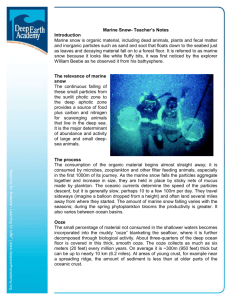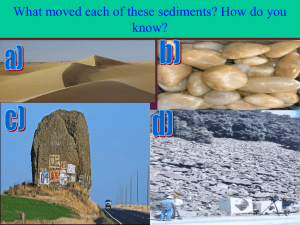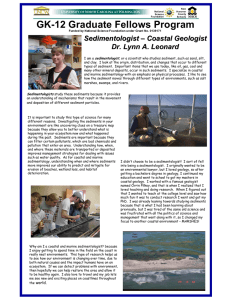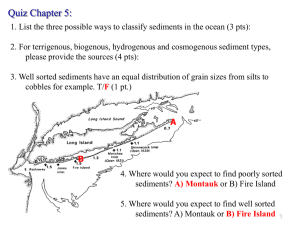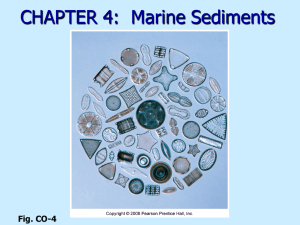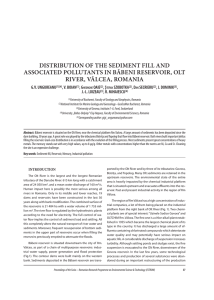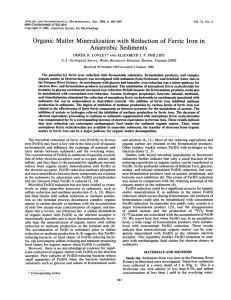Introduction (Page 98)
advertisement
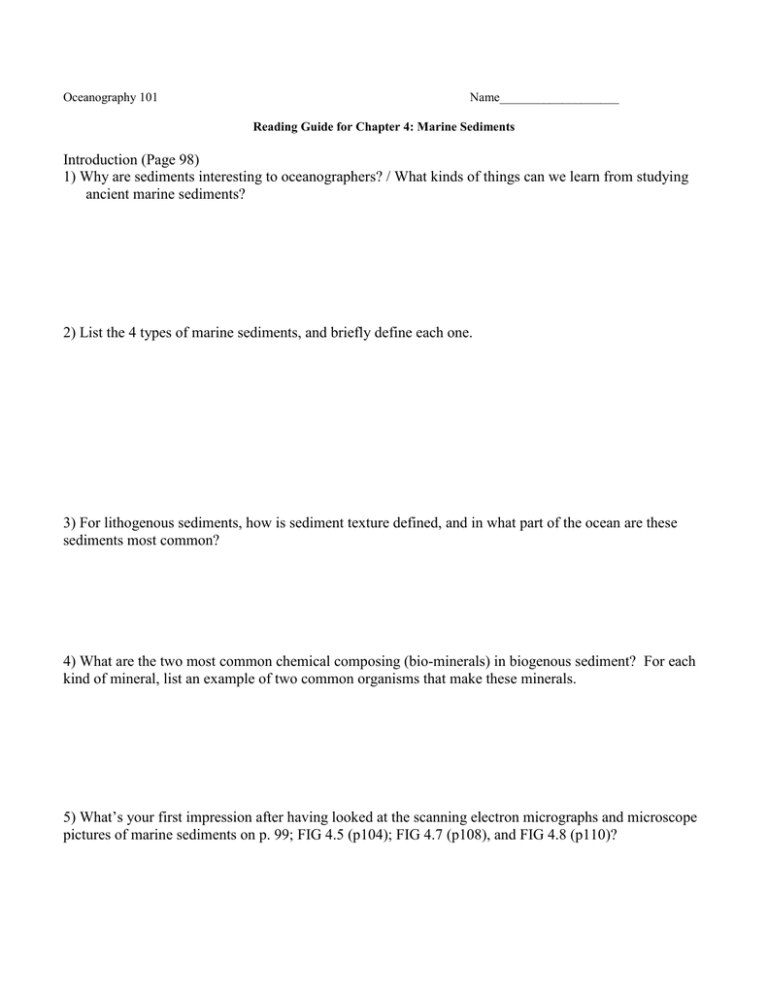
Oceanography 101 Name___________________ Reading Guide for Chapter 4: Marine Sediments Introduction (Page 98) 1) Why are sediments interesting to oceanographers? / What kinds of things can we learn from studying ancient marine sediments? 2) List the 4 types of marine sediments, and briefly define each one. 3) For lithogenous sediments, how is sediment texture defined, and in what part of the ocean are these sediments most common? 4) What are the two most common chemical composing (bio-minerals) in biogenous sediment? For each kind of mineral, list an example of two common organisms that make these minerals. 5) What’s your first impression after having looked at the scanning electron micrographs and microscope pictures of marine sediments on p. 99; FIG 4.5 (p104); FIG 4.7 (p108), and FIG 4.8 (p110)? 6) Study FIG 4.19 pp 121. Describe the sediments we can find in each Marine Province: Continental Margin: Abyssal Plain: Mid-Ocean Ridge: 8) Briefly describe what is meant by the “Calcite Compensation Depth” a.k.a. the “CCD”: 9) Terms to know in this chapter: define each term listed below: Sediment sorting: Algae: Protozoan: Neritic deposits: Pelagic deposits: Siliceous ooze: Calcareous ooze: Plankton:



